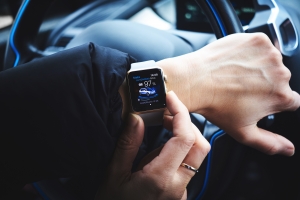Plans for 8,400 new south Dublin homes approved
Councillors had put provisions in the SDZ that would have meant new developments beside existing two-storey houses could only be two to three-storeys in height, but the board rejected this restriction.
Councillors had said that while car use should be discouraged, “the scheme shall not impact on the rights of residents to own cars. Sufficient underground car parking spaces shall be provided to cater for residential parking if desired.” This was not approved by the board.
Marine creatures and even the environment that they inhibit really can be studied in much greater detail. This is all thanks to the Marine Skin project. This is a tag that has been developed in Saudi Arabia. The new version is half the size of the one that was originally released, and it even has the ability to operate up to 2kn below sea level.
The Marine Skin is thin, and it is also very flexible too. It is a light-weight polymer material and it is able to track an animal's activity. Early versions of the sensor were glued onto a blue crab and it is also done in the format of a non-invasive bracelet. The best thing about this is that you can avoid any glues that might go on to harm an animal's skin. The sensitivity of the monitor has been enhanced by over 15 times and this is especially useful. Further development is being done to try and make the system even more efficient. It will also help people to reduce the size of the previous version too. Tests have shown time and time again that the performance and even the flexibility of the skin has been attached to different fish. This includes sea bass and sea bream. Lab tests have been done in the Red Sea and they showcase over 10,000 bending cycles. If you work in engineering recruitment or technical recruitment then you will understand this more than anyone. This comes from Muhammed Mustafa and if more work is done to try and help the marine life then the environment will benefit too. That being said, more certainly needs to be done in order to make sure that these sensors do not harm aquatic life and to also make sure that the people who install them have the knowledge that they need.
A new UK CubeSat platform is going to launch in the year 2020 and they are going to track any electronic emission that come from ships. They are doing this so that they can crack down on any illegal maritime activity. Of course, it's important to know that all of the ships that they have come with AIS, or Automatic Identification Signals. This gives them the chance to identify one another at sea and it also helps them to track them via satellite too. AIS systems can easily be switched on and off and they are also disabled when ships happen to carry out any illicit activity. This is especially the case when you look at illegal fishing, piracy and even smuggling. The project is going to be backed by something called Innovate UK and it is a collaboration between Horizon Technologies and even the Satellite Applications Catapult. This is going to be launching from the International Space Station. When it is in orbit, it will then work with the Horizon's Amber Ground Exploitation system which is in Cornwall. The catapult has been completely committed to making use of any space-based technologies and this is going to be used to try and crack down as much as possible.
If you work in technical recruitment or even in engineering recruitment, then you will know what a huge step this can be and you will also know how much work people are putting in to make sure that more is done about this. As a UK SME they couldn't be more pleased to work with the association and it's even safe to say that this is the perfect example of how a public and even private partnership can change to try and make things better for everyone who is involved.
A new device has been released and it claims to be able to find sepsis in the body. It can do this in less than half an hour and it could save thousands of lives every single day. Sepsis really is a deadly infection and it is thought to kill more than 20,000 people every single day. Rapid detection really is crucial when it comes to treating this and you also have to make sure that you put the work in to try and obtain a definitive diagnosis.
The new system is being developed by the RAIS consortium. This happens to include research from Spain, Belgium, Germany and even Italy as well. They use light to try and find biomarkers that are super small in size. This is around the thickness of a human hair. During the operation, a small sample of blood is taken from the patient. This can be done by the thumb or even by the forefinger. It is then put into a centrifuge. A clinician can then examine the plasma, or the part of the blood where all of the proteins are. The plasma sample will then flow over a microarray, and this contains tiny spots that are then put on a nanostructured gold slide. They pass through a sample and when this happens, one goes through the clear part of the slide and it acts as a reference.
Depending on the amount and even the type of the biomarker that is attached, it is a good idea to obtain a very unique image. This image then tells you whether there is plasma in the blood and it will also help you to convert the light into electrons. This comes right from Dr. Roland Terborg and he works at the ICFO. Those who work in technical recruitment or even in engineering recruitment will understand this more than anyone.
Smart devices include electronics that can be worn. Now, they could be equipped with huge batteries and even sensors, and all of this is due to a brand-new production that is going to be launched by Nanusens.
This will free up space inside earbuds and it will also help you to accommodate much larger batteries and sensors. Micro Electro Systems are a vital component in a ton of electronical devices and they are also able to provide even more capabilities to the wearer. Since MEMS' own design sensor is unique, each one needs to have its own electronic chip.
Silicon dioxide is first etched to try and create the mechanical structure. In the new process, the structures can then include nanoscale parts which move. This can then form the sensor. Of course, it is important to know that you need empty space to try and move the MEMs device. That is why they are choosing to etch away at the silicone dioxide very slowly so that it is left behind in the metal. This will help them to generate the power they need to encourage the metal to move. The use of the CMOS process also gives Nanusens the chance to take advantage of the Moore's Law. This is to do with electronics, and those who work in engineering recruitment or even in technical recruitment will understand this more than anyone.
To begin with, the technology is going to be applied to earbuds and this will help to free up much more space for even bigger batteries. This will help to improve operational life and it could even be used in smart phones and other devices too. This is incredible news to say the least and if more work is done then more results could be achieved.







